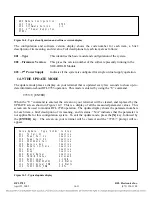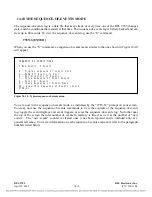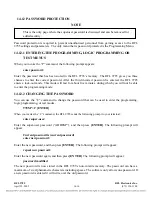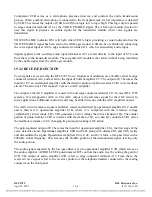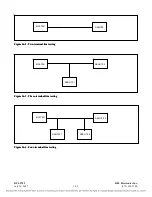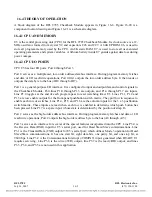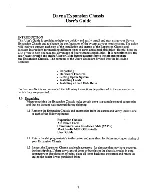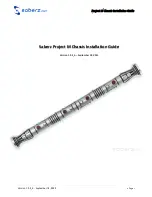
RFL 9785
RFL Electronics Inc.
April 25, 2005
15-4
(973) 334-3100
Comparator U8B serves as a microphone presence detector, and controls the entire transmission
process. When a carbon microphone is connected to the front panel jack, its low impedance is detected
by U8B. This causes the output of U8B to shift from logic low to logic high. This logic high is passed
to edge connector terminal A16 as the VOICE ENABLE signal. The AM Logic module (Section 6)
uses this signal to produce an enable signal for the transmitter module when voice signals are
transmitted.
VOICE ENABLE indicator DS1 will light when U8B is high, providing a visual indication that the
VOICE ENABLE signal has been sent to the AM Logic module. U8B can be overridden by connecting
the voice signal input at A14 to edge connector terminal A21, which is an auxiliary audio input.
Signals applied to the auxiliary audio input terminal at A21 are fed directly to the input of U5C, and
from there to the transmitter module. These signals will modulate the carrier without being controlled
by the enable signal from the AM Logic module.
15.3.2
RECEIVER SECTION
Voice signals are received by the RFL 9785 Voice Module as modulation on a 24-kHz carrier at edge
connector terminal A14, and are fed to the input of buffer/amplifier U3. The output of U3 becomes the
input for U2, an operational amplifier with the detector portion of photo-isolator LCR1 in its feedback
circuit. The action of LCR1 makes U2 act as an AGC amplifier.
The output of the AGC amplifier is routed to J2 and edge connector terminal C13. In most RFL 9785
systems, J2 is strapped for AGC in. The AGC output is the reference signal for the AGC circuit. In
some applications, additional control circuits may be added in series with the AGC amplifier output.
The AGC circuit reference signal is buffered, scaled and rectified by operational amplifier U1C and D,
and is then fed to operational amplifier U1B, where it is compared with the reference voltage
established by Zener diode CR3. U1B generates an error voltage that drives transistor Q1. The emitter
portion of photo-isolator LCR1 is in series with the emitter of Q1, so when Q1 conducts, LCR1 varies
the feedback resistance in U2, changing its gain and providing AGC action.
The gain-regulated output of U2 becomes the input for operational amplifier U1A, the first stage of the
voice detector circuit. Operational amplifiers U4B and U4D, along with diodes CR5 and CR6, rectify
and demodulate the signal. Operational amplifiers U4A, U4C, and U7A form a low-pass filter with a
2000-Hz cutoff frequency. This removes the 24-kHz portion of the demodulated signal, leaving only
the audio portion.
The audio signal separated by the low-pass filter is fed to operational amplifier U7B, which serves as
the audio amplifier. AUDIO LEVEL potentiometer R71 controls the audio level by setting the gain for
U7B. The output of audio amplifier U7B is fed to edge connector terminal A17. From there, the
received voice signal is fed to the receiver portion of the telephone handset connected to the mating
connector on the front panel.






